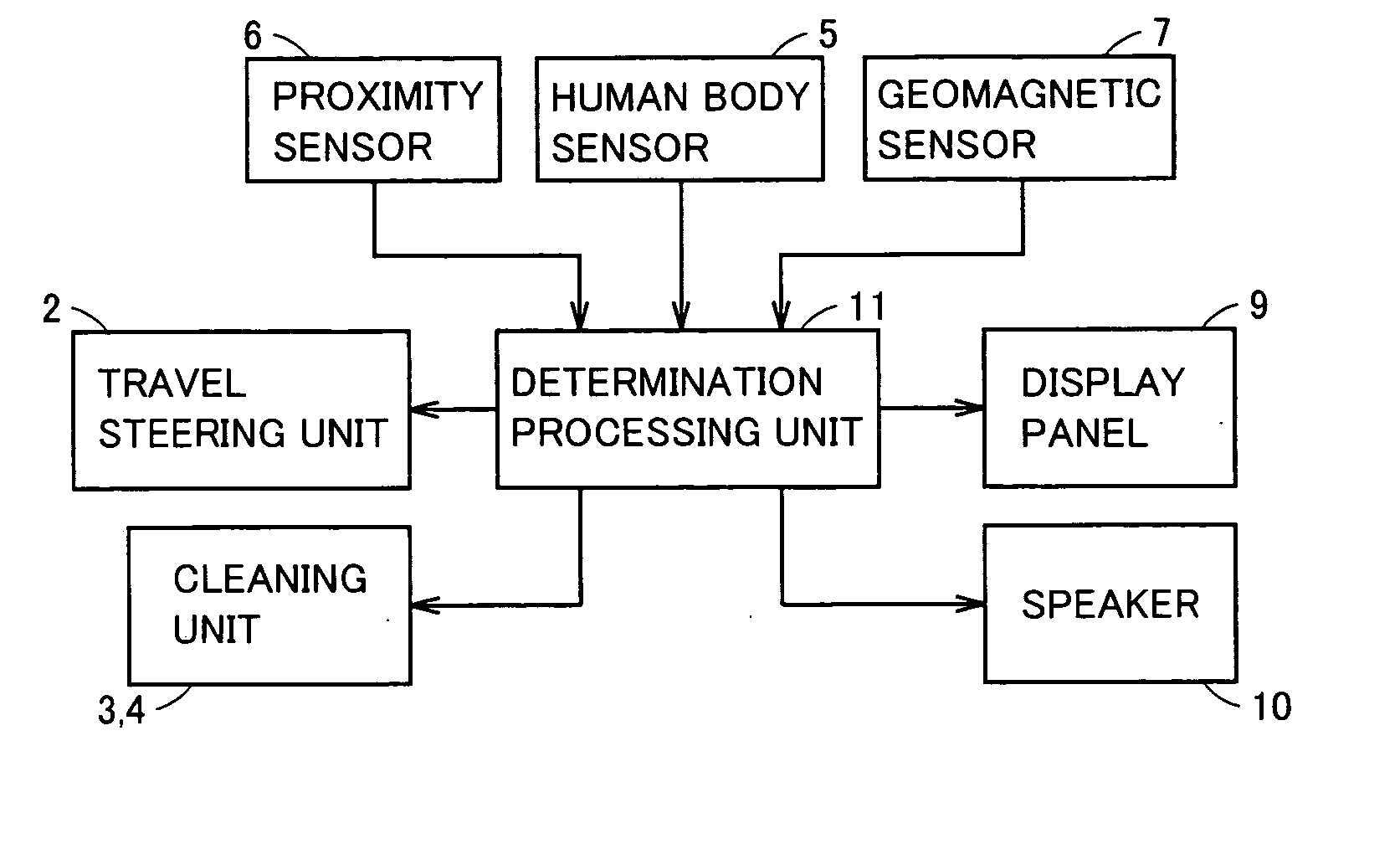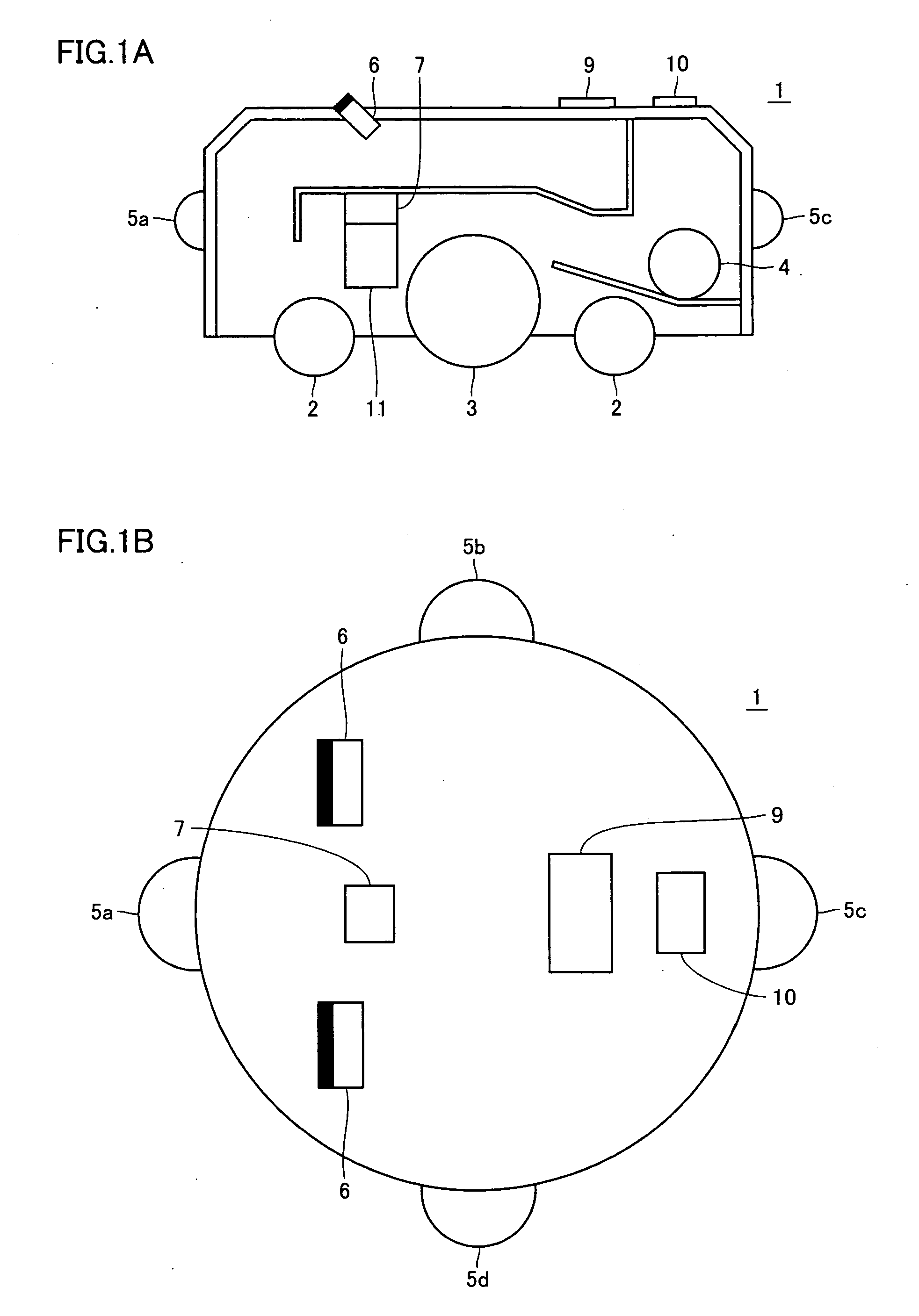Self-running cleaner with collision obviation capability
a technology of collision obviation and cleaner, which is applied in the direction of process and machine control, distance measurement, instruments, etc., can solve the problems of main body deviating from the former, colliding with the obstacle, and affecting the efficiency of the job
- Summary
- Abstract
- Description
- Claims
- Application Information
AI Technical Summary
Benefits of technology
Problems solved by technology
Method used
Image
Examples
first embodiment
[0032] Referring to FIG. 1A, a self-running cleaner according to a first embodiment of the present invention includes a rolling brush 3 and a suction motor 4 as the cleaning unit, and a driving wheel 2 as the travel steering unit. The cleaning unit and the travel steering unit are respectively under control of a determination processing unit 11. The function of respective means is similar to that of the conventional self-running cleaner described above (refer to FIG. 6). Therefore, detailed description thereof will not be repeated.
[0033] Determination processing unit 11 covers control of the entire self-running cleaner, and is formed of, for example, a microprocessor (MPU: microprocessor unit).
[0034] As shown in FIG. 1B, the self-running cleaner also includes human body sensors 5a-5d and a proximity sensor 6 as an obstacle sensing unit, and a geomagnetic sensor 7 as a position identify unit. Alternatively, a gyrosenser, an acceleration sensor (both not shown) or the like may be us...
second embodiment
[0064] Means for avoiding collision with an obstacle was described in the previous embodiment. Since the cleaning job can be resumed after the obviation operation, higher job efficiency can be realized as compared to the conventional self-running cleaner that stops upon sensing an obstacle.
[0065] The second embodiment of the present invention is directed to another means for avoiding collision from the standpoint of efficiency of the cleaning job. The configuration of the self-running cleaner of the second embodiment is similar to that described with reference to FIGS. 1A, 1B and FIG. 2. Therefore, detailed description thereof will not be illustrated and described.
[0066]FIG. 5 is a flow chart of a collision obviation operation carried out by the self-running cleaner of the second embodiment.
[0067] Referring to FIG. 5, it is assumed that main body 1 attains a normal operation state, and executes a cleaning job while self-propelling (step S20).
[0068] At this stage, determination p...
PUM
 Login to View More
Login to View More Abstract
Description
Claims
Application Information
 Login to View More
Login to View More - R&D
- Intellectual Property
- Life Sciences
- Materials
- Tech Scout
- Unparalleled Data Quality
- Higher Quality Content
- 60% Fewer Hallucinations
Browse by: Latest US Patents, China's latest patents, Technical Efficacy Thesaurus, Application Domain, Technology Topic, Popular Technical Reports.
© 2025 PatSnap. All rights reserved.Legal|Privacy policy|Modern Slavery Act Transparency Statement|Sitemap|About US| Contact US: help@patsnap.com



